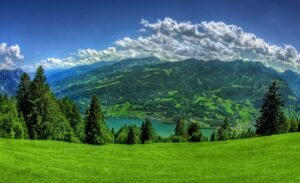Introduction
The Dejean Eagles, a name that resonates with power and grace, are among the most awe-inspiring raptors in the avian world. These magnificent birds, known for their striking appearance and unparalleled hunting skills, have captivated bird enthusiasts and conservationists alike. In this blog post, we delve into the world of Dejean Eagles, exploring their habitat, behavior, and the challenges they face in the modern world.
Who Are the Dejean Eagles?
The Dejean Eagles are a rare and majestic species of eagles, renowned for their impressive wingspan and keen eyesight. Named after the French ornithologist Pierre Dejean, these birds are often found in remote, mountainous regions. Their distinctive plumage, characterized by dark brown feathers with golden highlights, sets them apart from other eagle species. The Dejean Eagles are not just birds; they are symbols of strength and freedom, embodying the untamed spirit of the wild.
Habitat and Distribution of Dejean Eagles
Dejean Eagles thrive in rugged, high-altitude environments, often nesting on cliffs or tall trees. Their preferred habitats include remote mountain ranges and dense forests, where they can hunt and nest undisturbed. These eagles are primarily found in regions of South America and parts of Central Asia, where the terrain provides ample opportunities for hunting and raising their young. The isolation of their habitats has helped preserve the Dejean Eagles, but it also makes studying and conserving them a significant challenge.
The Hunting Prowess of Dejean Eagles
One of the most remarkable aspects of Dejean Eagles is their hunting prowess. These birds are apex predators, capable of taking down prey much larger than themselves. With a wingspan of up to 8 feet, they can soar effortlessly at high altitudes, scanning the ground for potential prey. Their diet consists mainly of small mammals, reptiles, and occasionally other birds. The Dejean Eagles’ sharp talons and powerful beaks make them formidable hunters, ensuring their survival in the wild.
Breeding and Lifecycle of Dejean Eagles
The breeding habits of Dejean Eagles are as fascinating as their hunting skills. These birds are monogamous, often mating for life. During the breeding season, pairs engage in elaborate courtship displays, including aerial acrobatics and vocalizations. The female typically lays one to two eggs, which both parents incubate. The chicks, once hatched, remain in the nest for several months, relying on their parents for food and protection. The lifecycle of Dejean Eagles is a testament to their resilience and adaptability.
Threats to the Dejean Eagles
Despite their strength and adaptability, Dejean Eagles face numerous threats. Habitat destruction, caused by deforestation and human encroachment, is one of the most significant challenges. Additionally, these birds are often victims of illegal hunting and poaching. Climate change also poses a threat, altering the ecosystems they depend on. Conservationists are working tirelessly to protect the Dejean Eagles, but much more needs to be done to ensure their survival.
Conservation Efforts for Dejean Eagles
Efforts to conserve Dejean Eagles are gaining momentum, thanks to the dedication of wildlife organizations and local communities. Initiatives include habitat restoration, anti-poaching campaigns, and public awareness programs. Researchers are also using advanced technology, such as satellite tracking, to monitor the movements and behavior of Dejean Eagles. These efforts are crucial in safeguarding the future of these majestic birds and the ecosystems they inhabit.
The Cultural Significance of Dejean Eagles
Dejean Eagles hold a special place in the cultures of the regions they inhabit. In many indigenous communities, these birds are revered as symbols of power and spirituality. Their images are often featured in traditional art and folklore, reflecting their importance in local heritage. The cultural significance of Dejean Eagles underscores the need to protect them, not just for ecological reasons but also for their role in human history and identity.
Conclusion
The Dejean Eagles are more than just birds; they are a testament to the beauty and complexity of the natural world. Their strength, grace, and resilience inspire awe and admiration, reminding us of the importance of preserving our planet’s biodiversity. By understanding and protecting the Dejean Eagles, we take a step toward ensuring a healthier, more balanced ecosystem for future generations.
FAQs
1. What makes Dejean Eagles unique among other eagle species?
Dejean Eagles are distinguished by their striking plumage, impressive wingspan, and exceptional hunting skills. Their remote habitats and monogamous breeding habits also set them apart.
2. Where can Dejean Eagles be found?
Dejean Eagles are primarily found in high-altitude regions of South America and Central Asia, where they nest on cliffs and tall trees.
3. What do Dejean Eagles eat?
Their diet consists mainly of small mammals, reptiles, and occasionally other birds. They are skilled hunters, using their sharp talons and powerful beaks to catch prey.
4. What are the main threats to Dejean Eagles?
Habitat destruction, illegal hunting, and climate change are the primary threats to Dejean Eagles. Conservation efforts are crucial to their survival.
5. How can we help protect Dejean Eagles?
Supporting conservation organizations, spreading awareness, and advocating for habitat protection are effective ways to help safeguard Dejean Eagles.













